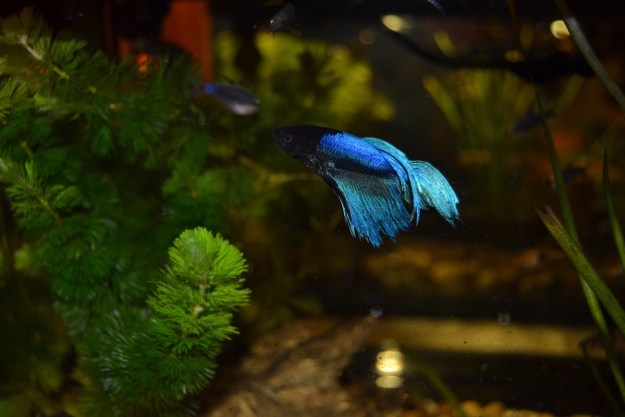There’s something intriguing and captivating about sharks, and when you can have one in your own home aquarium? Of course you’d want to add this unique species to your tank. Unfortunately, keeping a small shark at home isn’t as easy as it might seem. Before you bring home a shark, take some time to learn about the pros and cons of having a shark and which breeds make the best small sharks for home aquarium life.

The pros and cons of small sharks for fish tanks
Sharks often require more care than your other aquarium creatures. Sharks can need specialized diets, and they have to be fed at precise times to accommodate their dietary needs. Some sharks may prey on the other fish in your aquarium, so choosing fish that can coexist with your shark can become a balancing act. Sharks can live for as many as 25 to 35 years, which makes them long-term choices.
If you’re thinking about adding sharks to your aquarium, then you’ll need to carefully research the species that you’re considering getting. Many sharks require significant space, so you might need a tank that’s 55 gallons or larger.
With careful research and an understanding of shark care, you can successfully add a small shark to your tank. Some sharks even feed on algae, adding balance to your aquarium environment. Sharks are beautiful and entertaining, and you’ll have the opportunity to observe shark behavior without visiting an aquarium. Owning a shark can be a unique experience, but you’ll need to weigh the pros and cons when deciding if it’s right for you.
The best small sharks for home aquarium settings
Part of the challenge of succeeding with a small shark in your fish tank is that many species grow up to be large. Starting with the wrong shark means that pet could quickly outgrow your aquarium and keep on growing! You might find yourself buying a larger tank, and then a larger tank, and then … you get the idea.
Certain small saltwater sharks are suitable for home aquarium environments:
- The bamboo shark will need a large aquarium with plenty of room to swim. This breed of shark does get hungry, so pair it only with other fish that won’t make a tempting meal. This shark breed is nocturnal and uses its fins to walk across the floor of your tank.
- The epaulette is a highly popular pet shark. This bottom-feeder moves quickly through the water, though it usually retreats to sheltered places, like those in between coral. It mainly eats shrimp and goes a few weeks between meals.
- The smaller wobbegong shark species stays smaller, suitable for aquarium living. This unusual shark spends most of its time resting on the bottom of the tank, and it eats only every three to four days.
You also have plenty of small freshwater sharks to choose from:
- The rainbow shark is a bottom dweller that likes to hide in rocks and plants. It’s active during the daytime and features brilliant coloring.
- The silver shark, also known as the bala shark, lives well in a community setting with larger fish. These sharks grow up to one foot long and often swim as a group.
- The harlequin shark thrives in aquariums where there’s plenty of algae and bacteria, which they feed on. They’re highly aggressive and require moderate care.
These sharks are all popular options for home aquariums, but it’s important to choose the species that’s right for your setup and goals.
Caring for your shark
These small sharks for fish tanks require more care than your typical fish species do. Specific care needs depend on the species of shark that you buy, but most sharks will benefit from a long, generously sized tank that gives them plenty of space to swim and explore.
In addition to investing in a large tank, plan to purchase a strong filtration system to accommodate the increased waste that sharks produce. You will also need to carefully monitor the water levels in the tank to maintain an appropriate environment for all your aquatic creatures.
Tank decorations aren’t only for good looks — they can matter to sharks. Many shark breeds prefer to hide in dense plants or coral, so you’ll need to provide an environment that’s conducive to your shark’s instincts and resembles their natural habitat.
Feeding your shark can be somewhat time-intensive. You may need to source specialty food, like shrimp, and you’ll need to plan feedings for times that accommodate your shark’s feeding schedule and dietary needs. Some sharks eat only once or twice a week, while others require more frequent feedings.
Successfully keeping a shark
If you think it’s time to add a shark to your aquarium, the more research you do in advance, the better. With thorough research, you can understand the unique traits and needs of the shark species that you’re considering. This can help you make the right choice for your tank.
Want to know if you can keep seahorses in your home aquarium? Check out our guide.
Editors' Recommendations
- What causes high pH in an aquarium? We’ll walk you through getting your tank levels in check
- A simple guide to what to feed tadpoles in your aquarium
- What fish can live with bettas? These are your best bets for fish buddies
- What you need to know about sugar gliders before you get an exotic pet
- Add rainbowfish to your tank – these beauties will brighten up any aquarium



